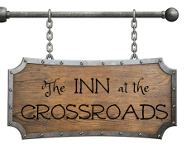“Part of him wanted nothing so much as to hear Bran laugh again, to sup on one of Gage’s beef-and-bacon pies, to listen to Old Nan tell her tales of the children of the forest and Florian the Fool.” -A Game of Thrones
Medieval Beef-and-Bacon Pie
Thoughts:
Both of these pies are delicious, but they are very different; the medieval pie is sweet, the modern is savory.
The sweetness of the medieval pie comes from added fruit and honey. As the pie bakes, the fruit melts, giving a lovely counter-taste to the tart vinegar and salty bacon. The fruit flavor fades into the background and what remains is a sweet, rich meat pie with an easy medley of flavors.
The savory modern pie was more what we imagined when we read about beef-and-bacon pies of Winterfell. For all that this is a relatively dense dish, the flavors are fairly light. The beef, bacon, onions, and herbs are all distinguishable, but don’t linger overlong on the palate.
Bottom line? Medieval is sweet, modern is savory. Make both, and tell us what you think! *The Modern recipe is now exclusively in the GoT Cookbook.
Medieval Beef-and-Bacon Pie
ORIGINAL RECEIPT:
To make Pyes. Pyes of mutton or beif must be fyne mynced & seasoned with pepper and salte and a lytel saffron to colour it, suet or marrow a good quantitie, a lytell vynegre, pruynes, great reasons, and dates, take the fattest of the broath of powdred beefe. – A Propre new booke of Cokery, 1545
Our changes: We added bacon. Delicious, thick cut bacon, in place of the marrow. We winged the proportions a little on the dried fruit based on what was left in our pantry.
Ingredients:
- Pastry dough enough for 9″ pie pan, top and bottom (Recipe)
- 1 ½ lbs. stew beef cut into small pieces
- ½ cup bacon, diced or cut small
- ½ tsp. pepper (or to taste)
- ½ tsp. salt (or to taste)
- 1/4 cup red wine vinegar
- 1/3 cup prunes, sliced
- 1/3 cup raisins
- 1/3 cup dates, chopped
- ~1 cups beef broth
- 2-3 Tbs. flour
On the stovetop, cook the diced bacon until the fat runs from it; drain off the fat. To the bacon pan, add the beef, spices, vinegar & the fruit. Add enough broth to thoroughly wet the mixture – the final consistency should be runny.
Throw in the flour and cook on low heat until the juices form a sort of gravy.
Let cool. Line a 9-inch pie pan with and fill with the meat mixture. Add a pastry lid or leave open-faced. Bake at 375º F until filling is bubbling and the pastry cooked, approx. 40 minutes.
NB: The cookbook contains a better, more delicious, perfected modern pie recipe, complete with a lattice-woven bacon top.










